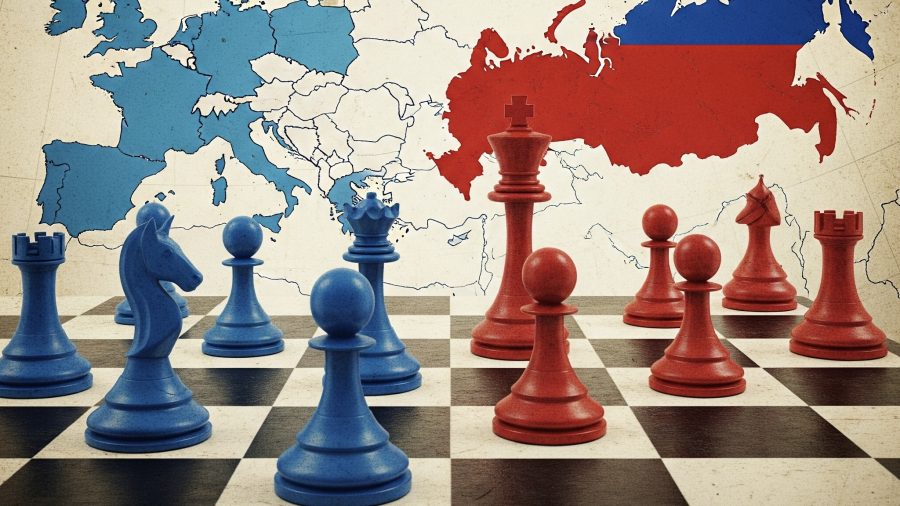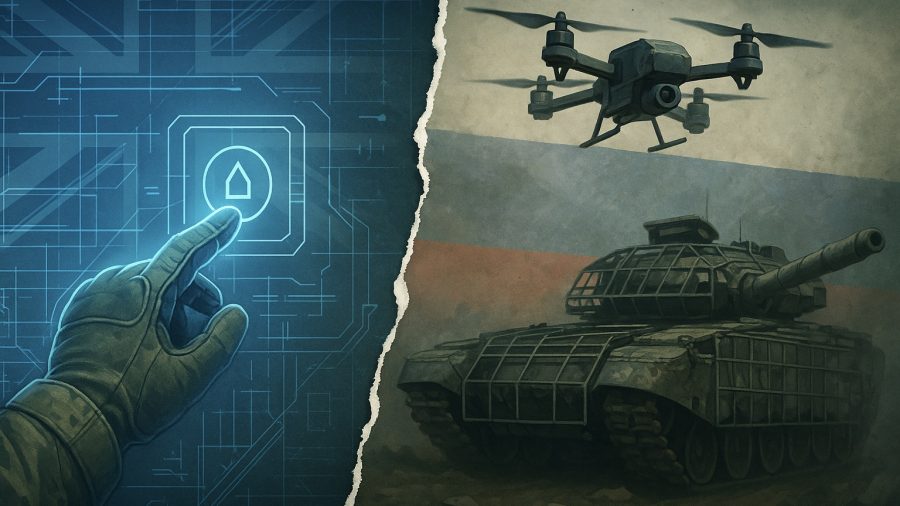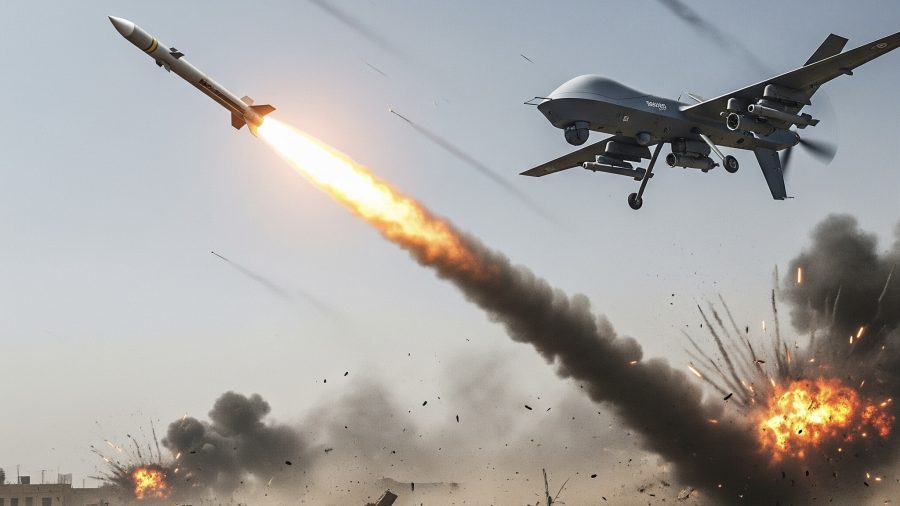Considering the strategic landscape of early 2025, with staggering Russian tank losses and a tragic civilian death toll in Ukraine, it is essential to look beyond conventional military analysis to understand Moscow’s behaviour (Oryx, 2025; OHCHR, 2025, p. 1). Russia’s actions since the end of the Cold War are not merely a product of its military hardware or official doctrine. Instead, they are profoundly shaped by the lens through which its elites understand what it means to be ‘winning’.
This perspective, in what academics might term an ‘epistemology of victory’, is not fixed. It has evolved from the Soviet focus on decisive battlefield outcomes to a more fluid set of modern priorities: narrative control, perceived dominance in a crisis, and, above all, the security of the regime itself. These priorities are visible in the Kremlin’s budget choices, its use of military force, and the stories it tells itself and the world (Renz, 2018, pp. 46-52). By examining this internal logic, we can better understand why Russia built the military it has and why its performance, particularly in Ukraine, has unfolded in such a costly and often contradictory manner.
The Real Meaning of Victory
For Western observers, victory is often measured in tangible terms: territory gained, enemy forces defeated. However, the collapse of the Soviet Union and the subsequent years of perceived humiliation shattered these traditional metrics for Moscow (Giles, 2017, pp. 1-2; Renz, 2018, pp. 46-52). This triggered a deep-seated need among the Russian elite for a renewed sense of national identity and purpose (Tyushka, 2022, p. 117).
In response, the Kremlin has constructed a new definition of victory. This is rooted in the idea of Russia as a unique ‘civilisation-state’ or the inheritor of ‘Historical Russia’ – locked in an existential struggle with a hostile West. In this narrative, victory is less about battlefield gains and more about safeguarding Russia’s civilisational sovereignty and cultural identity (Tyushka, 2022, p. 116). The goal is to achieve what one scholar calls ‘civilisational immunity’ from Western norms and influence (Suslov, 2018, p. 345).
This makes the narrative itself a form of strategic capability. Controlling the story, both at home and abroad, becomes as important as controlling territory. This logic helps explain Russia’s vast investments in information warfare and its constant efforts to frame international events as proof of Western aggression, thereby justifying its own actions as defensive (Renz, 2018, pp. 74-77; Tyushka, 2022, p. 116).
Guarding the Regime
Nowhere is this focus on internal stability clearer than in the national budget. Despite the immense financial pressures of a prolonged, high-intensity war in Ukraine, the Kremlin has consistently protected funding for its National Guard, or Rosgvardia. This powerful internal security force, reporting directly to the presidency, is tasked with crowd control, counter-terrorism, and suppressing internal dissent.
Even as the Ministry of Defence budget has soared to manage the war, funding for Rosgvardia has remained at historically high levels for 2024 and 2025. This refusal to sacrifice internal security capacity, even as the war effort strains the economy, is telling (Cooper, 2025, pp. 3-8). With around a third of all federal spending now classified and hidden from public view, the Kremlin signals its core priority: the survival of the regime against internal threats is co-equal with, if not more important than, success in external conflicts (Cooper, 2025, pp. 3-4, 6). The message is that the narrative of domestic cohesion and elite loyalty must be maintained at all costs.
This logic also explains the development of certain ‘prestige’ weapon systems. Hypersonic missiles like the Kinzhal, for example, have questionable operational utility but serve a powerful performative function. They broadcast a message of technological virtuosity, contesting Western military-technical dominance and reinforcing Russia’s status as a top-tier power, regardless of their effectiveness on the actual battlefield (Dalsjö et al., 2022, pp. 12, 14).
When Myth Meets Reality
The 2022 invasion of Ukraine was the ultimate test of Russia’s military myths. The initial plan, likely based on the swift, perception-driven operations in Georgia (2008) and Crimea (2014), assumed the same playbook would work on a larger scale. It did not. The opening phase of the war exposed a chasm between claimed capability and battlefield performance, marked by logistical chaos, poor coordination, and a failure to achieve air superiority (Dalsjö et al., 2022, pp. 9-10).
The myth of a surgical, modern military quickly evaporated. Russia’s vaunted precision-guided missiles were expended at an unsustainable rate, with over 1,100 fired in the first month alone (U.S. Department of Defense, 2022). Soon, Russian forces were repurposing old S-300 air-defence missiles for inaccurate ground-attack roles, a move that starkly illustrated the collision between an identity built on technological finesse and the grim reality of material constraints (Army Recognition, 2024).
While the invasion is widely seen as a strategic failure by conventional Western standards (Dalsjö et al., 2022, pp. 7-10), it can be interpreted differently through the Kremlin’s lens. The brutal, high-loss assaults seen at places like Avdiivka in late 2023 (Milevski, 2023, pp. 123-125) can be reframed. Moscow has a documented history of using active conflicts as vicious, but effective, training grounds to forge a more experienced military (Giles, 2017, p. 4). This allows for a narrative of ‘losing as winning’, where today’s tactical losses are presented as the necessary price for creating a more lethal and battle-hardened army for tomorrow.
Conclusion
To understand Russian strategy, one must look past the tanks and missiles and focus on the internal narrative that gives them meaning. Moscow’s actions are driven by a definition of victory where controlling the story, ensuring the regime’s stability, and asserting a unique civilisational status are prized as highly as battlefield success. The war in Ukraine has revealed the severe strategic miscalculations that can arise when this performative, identity-driven logic clashes with the realities of conventional warfare (Dalsjö et al., 2022, pp. 8-11; Grisé et al., 2024, p. xi). For the Kremlin, victory may not be something to be won on a map, but a spectacle to be declared and sustained, no matter the cost.
Bibliography
Army Recognition. (2024). “Russia Repurposes S-300 Surface-to-Air Missiles for Ground Attacks Against the City of Kharkiv.” 5 January.
Cooper, J. (2025). Preparing for a Fourth Year of War: Military Spending in Russia’s Budget for 2025. SIPRI Insights on Peace and Security, no. 2025/04. Solna: SIPRI.
Dalsjö, R., Jonsson, M., and Norberg, J. (2022). “A Brutal Examination: Russian Military Capability in Light of the Ukraine War.” Survival 64(3), pp. 7–28.
Giles, K. (2017). Assessing Russia’s Reorganised and Rearmed Military. Task Force White Paper. Washington, DC: Carnegie Endowment for International Peace.
Grisé, M. et al. (2024). Russia’s Military After Ukraine. Santa Monica, CA: RAND Corporation.
Milevski, L. (2023). ‘The Primitivisation of Major Warfare’. Survival 65(6), pp. 119-36.
Oryx. (2025). “Attack On Europe: Documenting Russian Equipment Losses During The 2022 Russian Invasion of Ukraine.” Oryx (blog). Accessed May 2025.
Renz, B. (2018). Russia’s Military Revival. Newark: Polity Press.
Suslov, M. (2018). “‘Russian World’ Concept: Post-Soviet Geopolitical Ideology and the Logic of ‘Spheres of Influence’.” Geopolitics 23(2), pp. 330-350.
Treverton, G. F. and Jones, S. G. (2005). Measuring National Power. Santa Monica, CA: RAND Corporation.
Tyushka, A. (2022). “Weaponizing Narrative: Russia Contesting Europe’s Liberal Identity, Power and Hegemony.” Journal of Contemporary European Studies 30(1), pp. 115-35.
United Nations Office of the High Commissioner for Human Rights (OHCHR). (2025). Human Rights Three Years into Russia’s Full-Scale Invasion of Ukraine: Factsheet. Kyiv: United Nations Human Rights Monitoring Mission in Ukraine, 17 February.
U.S. Department of Defense. (2022). “Senior Defense Official Holds a Background Briefing.” Transcript, 21 March.




